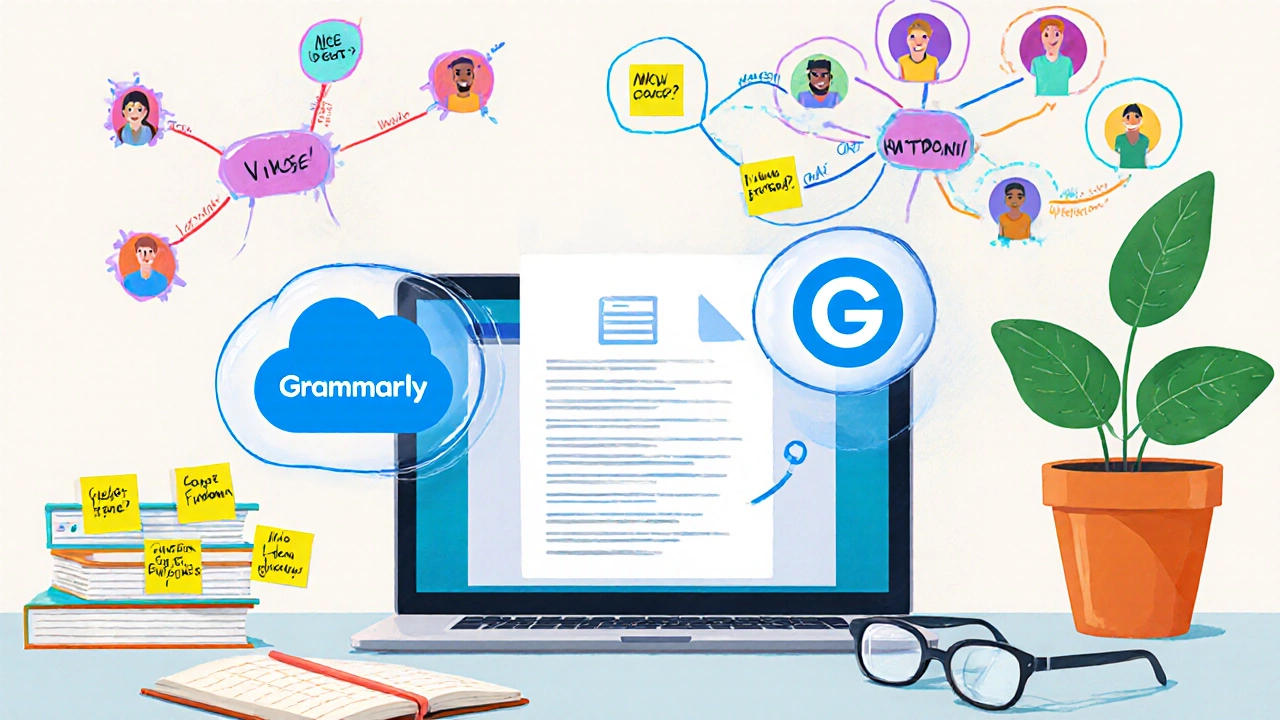Headline Generator for Content Writers
Create Compelling Headlines for Your Content
Perfect for beginners - helps you craft headlines that grab attention and improve SEO
Your Generated Headline:
Proven Headline Formulas
1. How-to + Benefit: "How to [Achieve] in [Time]"
2. Number + Value: "5 [Benefits] of [Topic]"
3. Problem + Solution: "Stop [Problem] - Here's the Fix"
4. Question + Answer: "[Question]? Here's the Answer"
Ever stared at a blank screen and wondered how to turn your thoughts into a blog post that actually gets read? You’re not alone. Millions of newbies face that same moment, but the good news is there’s a clear path from no‑experience to publishing your first article. In this guide you’ll learn the exact steps, tools, and habits you need to launch your content writing for beginners journey without feeling overwhelmed.
What is Content Writing?
Content Writing is a process of planning, creating, and publishing written material for digital platforms such as blogs, websites, and social media. It differs from academic or technical writing because the goal is to engage, inform, and often persuade an online audience. Whether you’re crafting a how‑to guide, a product review, or a listicle, the core principles remain the same: clarity, relevance, and value.
Core Skills Every New Writer Should Master
- Understanding your audience’s needs and language.
- Basic grammar and punctuation - tools like Grammarly (an AI‑powered writing assistant that checks spelling, grammar, and style) can catch most errors.
- Crafting compelling headlines that boost clicks.
- Basic SEO (search engine optimization, the practice of improving content visibility in search engines) concepts, especially keyword usage.
- Organizing ideas with an editorial calendar.
Setting Up Your Writing Workspace
Before you write, create a comfortable, distraction‑free environment. Here’s a quick setup checklist:
- Choose a reliable laptop or desktop with a stable internet connection.
- Install writing apps like Google Docs (a cloud‑based document editor that auto‑saves and allows collaboration) or Microsoft Word (a desktop word processor with robust formatting options) for drafting.
- Use a content‑blocking extension (e.g., Freedom) to stay focused.
- Set up a note‑taking tool such as Evernote (a cross‑platform note app for capturing ideas and research) to store snippets and outlines.
Finding Your Niche & Audience
Trying to write about everything will dilute your voice. Pick a niche you enjoy and that has a defined audience. Follow these steps:
- Brainstorm interests: List topics you can talk about for hours.
- Research demand using Keyword Research (the practice of discovering search terms people use online) tools like Google Keyword Planner or Ubersuggest.
- Validate with social platforms - see if groups or forums around your niche are active.
- Define an audience persona: age, job, goals, challenges.
For example, if you love baking, a persona could be “mid‑30s parents looking for quick, healthy desserts”. This focus will guide every piece you write.

Crafting Your First Blog Post
Now that you know who you’re writing for, it’s time to create a post. Follow this step‑by‑step process:
- Pick a target keyword that matches your audience’s search intent.
- Create a headline using the “how‑to + benefit” formula, e.g., “How to Bake a 10‑Minute Chocolate Mug Cake”.
- Outline the post: intro, 3‑5 main points, and a conclusion with a call‑to‑action (CTA).
- Write the draft. Keep sentences short (under 20 words) and paragraphs under 3 sentences.
- Insert visuals. Free tools like Canva (an online design platform for creating images and graphics) let you make custom headers quickly.
- Run the draft through Grammarly, then check for keyword placement (title, first 100 words, subheadings, meta description).
- Proofread aloud or use text‑to‑speech to catch awkward phrasing.
- Publish on your chosen platform (see next section).
Choosing a Publishing Platform
If you don’t already have a blog, start with a free, beginner‑friendly platform. Here’s a quick comparison:
| Feature | WordPress.com (Free) | WordPress.org (Self‑Hosted) | Blogger | Medium |
|---|---|---|---|---|
| Domain Customization | Subdomain only | Full custom domain | Subdomain only | Medium.com subdomain |
| Monetization | Limited ads | Full control (ads, affiliates) | Limited | Partner program |
| Design Flexibility | Basic themes | Thousands of themes + plugins | Basic templates | Minimal customization |
| SEO Control | Plugin support limited | Full SEO plugins (Yoast, Rank Math) | Basic SEO | Built‑in SEO |
Most beginners start with WordPress.com (a hosted version of WordPress that offers a free subdomain and basic themes) because it’s quick to set up and scales later.
Optimizing for SEO
Even a great post won’t get traffic if search engines can’t find it. Here are quick SEO wins:
- Keyword placement: Include the target keyword in the title, first paragraph, at least one subheading, and naturally throughout the body.
- Meta description: Write a 150‑character summary that contains the keyword and a compelling hook.
- Internal linking: Link to at least two older posts or relevant pages on your site.
- Image alt text: Describe the image and sprinkle the keyword when relevant.
- Readability: Aim for a Flesch‑Kincaid score around 60 - short sentences, simple words.
Building an Editorial Calendar
Consistency beats occasional perfection. Use a calendar to plan topics, deadlines, and promotion tasks. A simple spreadsheet with columns for "Publish Date", "Topic", "Keyword", "Status", and "Promotion Channel" works well. If you prefer visual tools, Trello (a kanban board app for tracking tasks and workflows) lets you drag cards from "Ideas" to "Published".
Publishing & Promoting Your Content
Once the post is live, push it out on social media, email newsletters, and relevant online communities:
- Twitter/X: Share a thread highlighting three key takeaways.
- LinkedIn: Post a short professional summary with a link.
- Facebook Groups: Join niche‑specific groups and share when allowed.
- Email: Send a brief teaser to your subscriber list.
- Reddit: Find subreddits related to your niche and contribute value before posting.
Track results using Google Analytics - look at pageviews, average time on page, and bounce rate to gauge engagement.
Common Mistakes Beginners Make (and How to Avoid Them)
- Writing for yourself, not the audience - always reference your persona.
- Skipping research - use keyword tools and browse top‑ranking articles first.
- Neglecting editing - a second read or a peer review catches errors.
- Over‑optimizing - keyword stuffing hurts readability and SEO.
- Inconsistent publishing - set realistic frequency (e.g., one post per week) and stick to it.
Quick Start Checklist
- Define your niche and audience persona.
- Choose a blogging platform (WordPress.com recommended).
- Create a content calendar for the next month.
- Research a target keyword and write a headline.
- Draft, edit, and optimize for SEO.
- Add at least one visual created in Canva.
- Publish and share on two social channels.
- Review traffic in Google Analytics after 7 days.
Next Steps & Troubleshooting
If your first post doesn’t get much traffic, try these fixes:
- Re‑optimize the title - make it more specific and include the keyword.
- Add backlinks - reach out to fellow bloggers for a link exchange.
- Improve the meta description - write a compelling, keyword‑rich snippet.
- Refresh content - add new data, images, or a bullet‑point summary.
Remember, content writing is a skill that improves with each post. Keep writing, keep learning, and soon you’ll see steady growth.
How many blog posts should a beginner publish per month?
Start with one high‑quality post per week (4 per month). Consistency matters more than quantity, and a weekly schedule is manageable for most newcomers.
Do I need a custom domain right away?
No. Begin with a free subdomain (e.g., yourname.wordpress.com) to test ideas. Switch to a custom domain once you have regular traffic or want a professional look.
What free tools help with keyword research?
Google Keyword Planner, Ubersuggest’s free tier, and Answer The Public are excellent for finding search volume and related queries without spending money.
How long should a beginner’s blog post be?
Aim for 1,200-1,500 words. This length is enough to cover a topic in depth, rank well in search, and keep readers engaged.
Can I earn money from a brand‑new blog?
Yes, but income streams like affiliate marketing, sponsored posts, or ads usually start after you build consistent traffic (typically 3-6 months).
